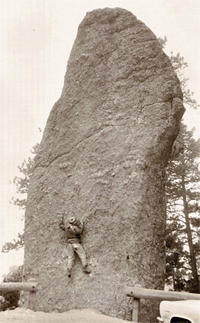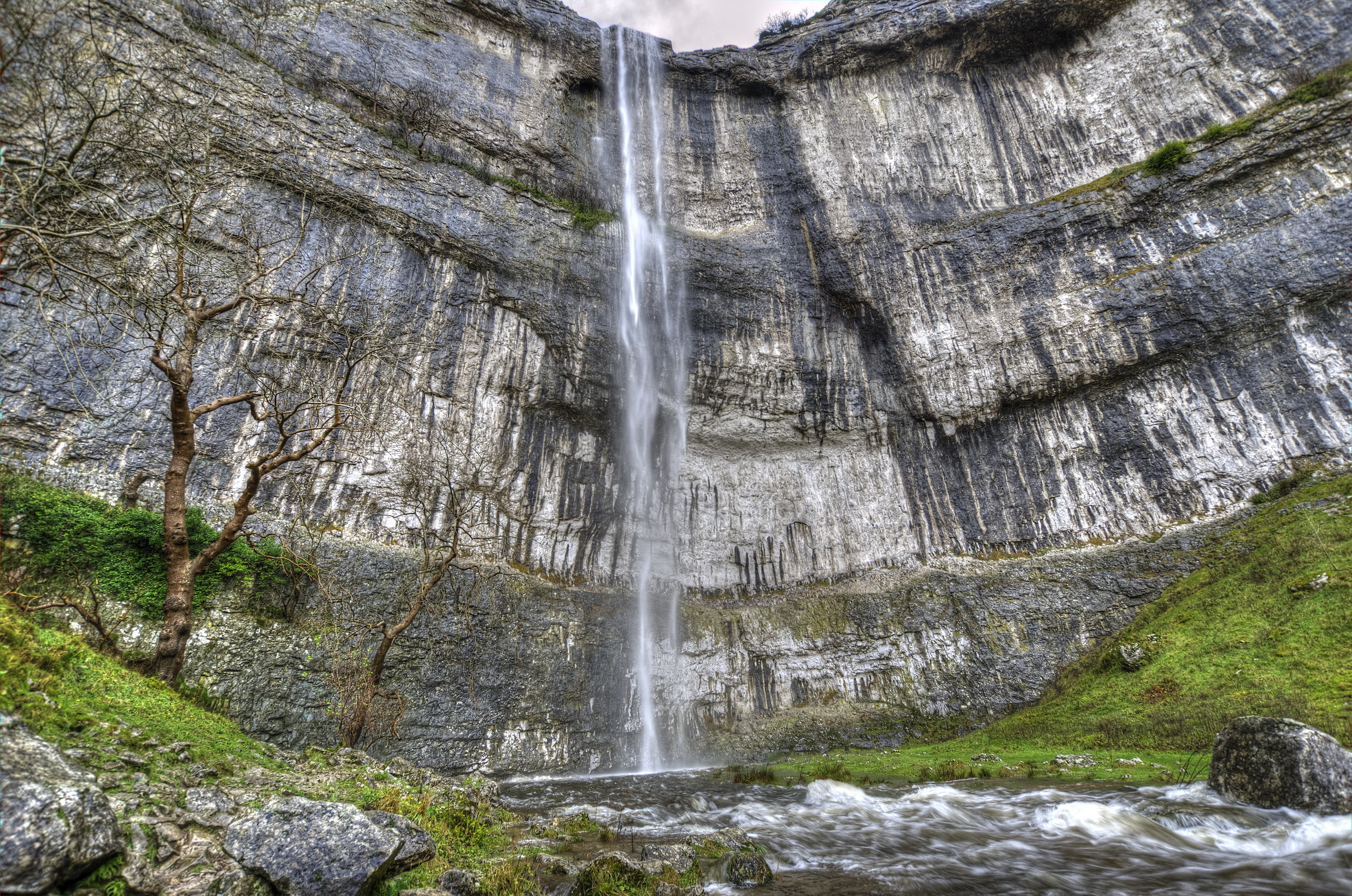|
Ben Moon (rock Climber)
Ben Moon (born 13 June 1966) is a rock climber from England. During the late 1980s and early 1990s, Moon, along with climbing partner Jerry Moffatt, were the two strongest British rock climbers and were key pioneers in the development of standards in international sport climbing. In 1991, Moon made the first-ever redpoint in history of a consensus grade climbing route with his ascent of '' Hubble. Climbing career Moon's first officially declared routes had somewhat controversial names. The routes were both in France and had been previously attempted for a long time by local climbers. After climbing them Moon named them after French military disasters, first the Maginot Line, at Volx, and secondly Agincourt, at Buoux. On 8 June 2015, Moon redpointed the Steve McClure route ''Rainshadow'', , at Malham Cove in North Yorkshire, England. Business ventures In 2002, Moon founded his climbing clothing and equipment company, Moon Climbing, after splitting from his previous c ... [...More Info...] [...Related Items...] OR: [Wikipedia] [Google] [Baidu] |
United Kingdom
The United Kingdom of Great Britain and Northern Ireland, commonly known as the United Kingdom (UK) or Britain, is a country in Northwestern Europe, off the coast of European mainland, the continental mainland. It comprises England, Scotland, Wales and Northern Ireland. The UK includes the island of Great Britain, the north-eastern part of the island of Ireland, and most of List of islands of the United Kingdom, the smaller islands within the British Isles, covering . Northern Ireland shares Republic of Ireland–United Kingdom border, a land border with the Republic of Ireland; otherwise, the UK is surrounded by the Atlantic Ocean, the North Sea, the English Channel, the Celtic Sea and the Irish Sea. It maintains sovereignty over the British Overseas Territories, which are located across various oceans and seas globally. The UK had an estimated population of over 68.2 million people in 2023. The capital and largest city of both England and the UK is London. The cities o ... [...More Info...] [...Related Items...] OR: [Wikipedia] [Google] [Baidu] |
Volx
Volx (; ) is a commune in the Alpes-de-Haute-Provence department in the Provence-Alpes-Côte d'Azur region in southeastern France. Population See also * Coteaux de Pierrevert AOC * Luberon The Luberon ( or ; Provençal dialect, Provençal: ''Leberon'' or ''Leberoun'' ) is a massif in central Provence in Southern France, part of the French Prealps. It has a maximum elevation of and an area of about . It is composed of three mounta ... References Communes of Alpes-de-Haute-Provence Alpes-de-Haute-Provence communes articles needing translation from French Wikipedia {{AlpesHauteProvence-geo-stub ... [...More Info...] [...Related Items...] OR: [Wikipedia] [Google] [Baidu] |
British Rock Climbers
British may refer to: Peoples, culture, and language * British people, nationals or natives of the United Kingdom, British Overseas Territories and Crown Dependencies. * British national identity, the characteristics of British people and culture * British English, the English language as spoken and written in United Kingdom of Great Britain and Northern Ireland and, more broadly, throughout the British Isles * Celtic Britons, an ancient ethno-linguistic group * Brittonic languages, a branch of the Insular Celtic language family (formerly called British) ** Common Brittonic, an ancient language Other uses *People or things associated with: ** Great Britain, an island ** British Isles, an island group ** United Kingdom, a sovereign state ** British Empire, a historical global colonial empire ** Kingdom of Great Britain (1707–1800) ** United Kingdom of Great Britain and Ireland (1801–1922) * British Raj, colonial India under the British Empire * British Hong Kong, colonial Ho ... [...More Info...] [...Related Items...] OR: [Wikipedia] [Google] [Baidu] |
Ron Fawcett
Ron Fawcett (born 6 May 1955) is a British rock climber and rock climbing author who is credited with pushing the technical standards of British rock climbing in traditional, sport, bouldering and free soloing disciplines, in the decade from the mid-1970s to the mid-1980s, and of pioneering the career of being a full-time professional rock climber. At the end of the 1970s to the early 1980s, Fawcett was widely considered the best and most notable rock climber in Britain. Climbing career Fawcett is considered as a legend of British rock climbing, and a prolific developer of challenging new routes that attracted international recognition. By the start of the 1980s, Fawcett was considered the most famous rock climber in Britain, with a reputation for high levels of fitness and mental fortitude. He produced bold routes that embraced both traditional climbing and early sport climbing techniques, and that are still considered test-pieces for rock climbers. Fawcett's dominance of Briti ... [...More Info...] [...Related Items...] OR: [Wikipedia] [Google] [Baidu] |
History Of Rock Climbing
In the history of rock climbing, the three main sub-disciplines – bouldering, Pitch (climbing), single-pitch climbing, and big wall climbing, big wall (and multi-pitch climbing, multi-pitch) climbing – can trace their origins to late 19th-century Europe. Bouldering started in Fontainebleau rock climbing, Fontainebleau, and was advanced by Pierre Allain in the 1930s, and John Gill (climber), John Gill in the 1950s. Big wall climbing, mostly free climbing but with some sections of aid pitons, started in the Dolomites, and was spread across the Alps in the 1930s by climbers such as Emilio Comici and Riccardo Cassin, and in the 1950s by Walter Bonatti, before reaching Yosemite where it was led in the 1950s to 1970s by climbers such as Royal Robbins. Single-pitch climbing started pre-1900 in both the Lake District and in Saxon Switzerland climbing region, Saxony, and by the late-1970s had spread widely with climbers such as Ron Fawcett (Britain), Bernd Arnold (Germany), Patrick ... [...More Info...] [...Related Items...] OR: [Wikipedia] [Google] [Baidu] |
List Of First Ascents (sport Climbing)
In rock-climbing, a first free ascent (FFA) is the first redpoint (climbing), redpoint, onsight or flash (climbing), flash of a pitch (ascent/descent), single-pitch, multi-pitch climbing, multi-pitch or bouldering, bouldering climbing route that did not involve using aid climbing, aid equipment to help progression or resting — the ascent must thus be performed in either a sport climbing, sport, a traditional climbing, traditional, or a free solo manner. First-free-ascents that set new grade milestones are important events in history of rock climbing, rock climbing history, and are listed below. While sport climbing has dominated overall Grade (climbing), grade milestones since the mid-1980s (i.e. are now the highest grades), milestones for modern traditional-climbing, free-solo-climbing, onsighted & flashed-ascents, are also listed. A climbing route's grade is provisional until enough climbers have repeated it to establish a "consensus". At the highest grades, this can take ye ... [...More Info...] [...Related Items...] OR: [Wikipedia] [Google] [Baidu] |
Hard Grit
''Hard Grit'' is a 1998 British rock climbing film directed by Richard Heap and produced by Slackjaw Film, featuring traditional climbing, free soloing, and bouldering on gritstone routes in the Peak District in Northern England. It is considered an important film in the genre and regarded as a historic and iconic film. The film starts with a dramatic fall by French climber Jean–Minh Trinh-Thieu on ''Gaia'' at Black Rocks. Hard Grit won ten international film festival awards. Content The film dramatically opens with French climber Jean–Minh Trinh-Thieu taking a large fall from the top of the Johnny Dawes's gritstone test-piece, ''Gaia'' ( E8 6c) at Black Rocks, from which Trinh-Thieu broke his leg. ''Rock & Ice'' called it "the most iconic rock climbing whipper allof all time". Shortly after the opening, film narrator Niall Grimes gives a brief and humorous overview of the history of gritstone climbing. As well as traditional climbing routes, the film also includes ascen ... [...More Info...] [...Related Items...] OR: [Wikipedia] [Google] [Baidu] |
Climbing Wall
A climbing wall is an artificially constructed wall with manufactured grips (or "holds") for the hands and feet. Most walls are located indoors, and climbing on such walls is often termed indoor climbing. Some walls are brick or wooden constructions but on modern walls, the material most often used is a thick multiplex board with holes drilled into it. Recently, manufactured steel and aluminum have also been used. The wall may have places to attach belay ropes, but may also be used to practice lead climbing or bouldering. Each hole contains a specially formed t-nut to allow modular climbing holds to be screwed onto the wall. With manufactured steel or aluminum walls, an engineered industrial fastener is used to secure climbing holds. The face of the multiplex board climbing surface is covered with textured products including concrete and paint or polyurethane loaded with sand. In addition to the textured surface and hand holds the wall may contain surface structures su ... [...More Info...] [...Related Items...] OR: [Wikipedia] [Google] [Baidu] |
MoonBoard
A campus board (or pan Güllich) is a training tool that has been widely adopted by sport climbers to improve their plyometric performance and led to dramatic improvements in climbing technique in all rock climbing disciplines. The campus board was invented in 1988 by German climber Wolfgang Güllich to help him climb the world's hardest consensus-graded route at the time, '' Action Directe'', and has since become a standard training tool for climbers. Other climbing training 'boards' have been developed since the campus board, including the MoonBoard, a small customized overhanging indoor climbing wall also for plyometric performance, and the hangboard (or also the fingerboard), a device for building up static strength, particularly in the fingers, but also in the arms. Description Typically, a user ascends or descends the campus board using only their hands, and often leaping from hold to hold (i.e both hands are off the board while transitioning between holds). Campus boards ... [...More Info...] [...Related Items...] OR: [Wikipedia] [Google] [Baidu] |
Malham Cove
Malham Cove is a large curved limestone formation north of the village of Malham, North Yorkshire, England. It was formed by a waterfall carrying meltwater from glaciers at the end of the last Last glacial period, Ice Age more than 12,000 years ago. Today it is a well-known beauty spot and rock climbing crag within the Yorkshire Dales National Park. A large limestone pavement lies above the cove. Geology The cove was formed by a large Ice Age river that fell at this point as a List of waterfalls by type#Cataract, cataract. The water drop was high and more than wide. The water flowing over the waterfall created the curved shape of the cove because the lip was more heavily eroded than the sides. A stream named Malham Beck originates on Malham Moor and emerges from a cave at the bottom of the cove. This is a different stream from the stream that flows out of Malham Tarn north of the cove. This latter stream goes underground at 'Water Sinks' about before the top of the cove ... [...More Info...] [...Related Items...] OR: [Wikipedia] [Google] [Baidu] |
Steve McClure
Steve McClure (born 25 July 1970) is a British rock climber and climbing author, who is widely regarded as Britain's leading and most important sport climber for a period that extends for over two decades, starting from the late 1990s. In 2017, he created ''Rainman'', Britain's first-ever sport route, and by that stage was responsible for developing the majority of routes graded and above in Britain. Although mainly known for sport climbing, McClure has also been one of the most successful British traditional climbers, and British onsight climbers (in both sport climbing and traditional climbing formats). Climbing career McClure started climbing early as both parents were keen climbers, and by age 16 was onsighting E6. McClure did not take up British sport climbing until he was 24, and said that it took him time to adapt saying, " n sportit's possible to commit 100%, rather than considering the risk and the danger n traditional. He went from onsighting E6 to onsighting ... [...More Info...] [...Related Items...] OR: [Wikipedia] [Google] [Baidu] |
Buoux
Buoux (; ) is a commune in the Vaucluse department in the Provence-Alpes-Côte d'Azur region in southeastern France. Located on the north side of the Luberon, the town is known for the high cliffs that surround it, making it a popular venue for rock-climbing enthusiasts, as well as the ruins of a medieval fort that was built in the 13th century and destroyed in 1660. The town's population peaked in the mid 19th century with 244 inhabitants in 1836 before falling to only 44 people in 1961. The population has since rebounded some to 122 in 2006. Buoux has few industries, including tourism, with several bed-and-breakfasts and restaurants, and agriculture, with production of lavender, honey and truffles. See also *Communes of the Vaucluse department *Céüse, leading limestone rock climbing crag in France *Verdon Gorge The Verdon Gorge (French language, French: ''Gorges du Verdon'' ) is a river canyon located in the Provence-Alpes-Côte d'Azur Regions of France, region of Southe ... [...More Info...] [...Related Items...] OR: [Wikipedia] [Google] [Baidu] |





